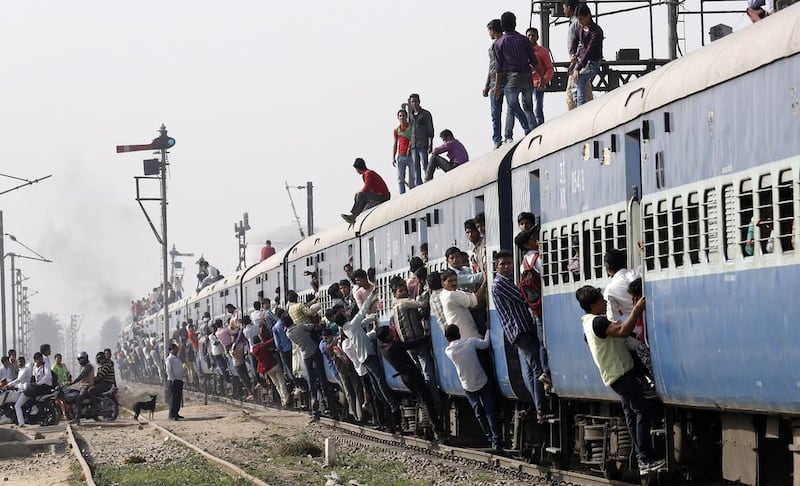NEW DELHI // For most Indians, the annual railway budget is a dense report of planned projects and statistics, to be glanced at only to check for a rise in ticket prices.
But for India’s railfans, it is a vital event that deserves close attention. They pore over every detail and bicker about the budget’s merits and downfalls, much like football enthusiasts at a World Cup final.
After all, the budget controls their chief obsession: the Indian Railways network, with its 116,000 kilometres of track, 12,617 passenger and 7,421 freight trains, 7,000-odd stations, and 21 million daily passengers.
Mohan Bhuyan, a member of the Indian Railways Fan Club, said that every railfan views the budget — released on Thursday — through their own particular perspective. For example, he was relieved that railway minister Suresh Prabhu did not announce any new trains, a departure from previous railway budgets.
“We’ve always seen railway ministers announce these trains as some form of largesse, to keep some other politician or his constituency happy,” Mr Bhuyan said.
There are roughly 4,500 members of the Indian Railways Fan Club, diehard rail fans who tend to know train timetables by heart. They can also determine where and when a locomotive was manufactured with merely a glance at the serial number across its front; recognise the sound of a GZB WAG-5 locomotive horn; and recall when a particular stretch of track was electrified.
Small groups of these members often go “railfanning,” riding trains purely to experience the journey and geek out over railway trivia, before posting extensive reports of their travels on the club’s website.
Shashanka Nanda, a railfan who works for a public relations firm in Delhi, watched the budget speech live on television, scanning for signs that his beloved railways might be improved.
This year’s budget emphasised cleanliness and the passenger experience, he said, “but if you look at past budgets, they’ve been full of announcements. It’s the execution of promises that never happens.”
Last July, in the first railway budget presented by prime minister Narendra Modi’s government, then-railway minister Sadananda Gowda said in his speech that although 99 new train lines had been announced over the previous ten years — an investment worth 600 billion rupees (Dh35.7bn) — only one of those projects was completed.
On Thursday, Mr Prabhu announced plans to invest US$137 billion (Dh503.2bn) in the railway network between now and 2019. “Really, the biggest investments are needed right now in rolling stock,” said Mr Nanda, referring to engines and coaches.
“In the US, you look at the locomotives, and they’re something around 20,000 horsepower,” he said. “Here we have 5,000 or 6,000 horsepower locos.”
Sridhar Joshi, who works at a customer service firm in Chennai and has been a rail fan for two decades, wished that a railway minister would take the bold step of hiking ticket prices, something the new budget does not call for.
“There is enough scope for this, and passengers will be sympathetic if the fares are raised little by little,” Mr Joshi said.
Right now, a standard ticket on a Delhi-Chennai train, which travels more than 2,000 kilometres, costs roughly 800 rupees.
The minimal cost, Mr Joshi said, “is among the reasons the Indian Railways’ finances are so stressed.”
Mr Bhuyan and Mr Nanda both welcomed the news that journey times in nine important corridors — including the one between Delhi and Mumbai — would be reduced.
It was about time, Mr Nanda said. “In the 1960s, the journey time between Delhi and Mumbai got to something like 16 hours. And it’s still pretty much the same. Nothing has changed. I cannot think of a bigger example than that to illustrate the health of the Indian Railways.”
Yet, despite the lack of improvements, Mr Nanda still rides the trains out of love for the network — for how it knits India together, and for the unique eccentricities of individual routes.
“But my wife refuses to get on a train these days,” he added. “She’d much rather fly.”
ssubramanian@thenational.ae





